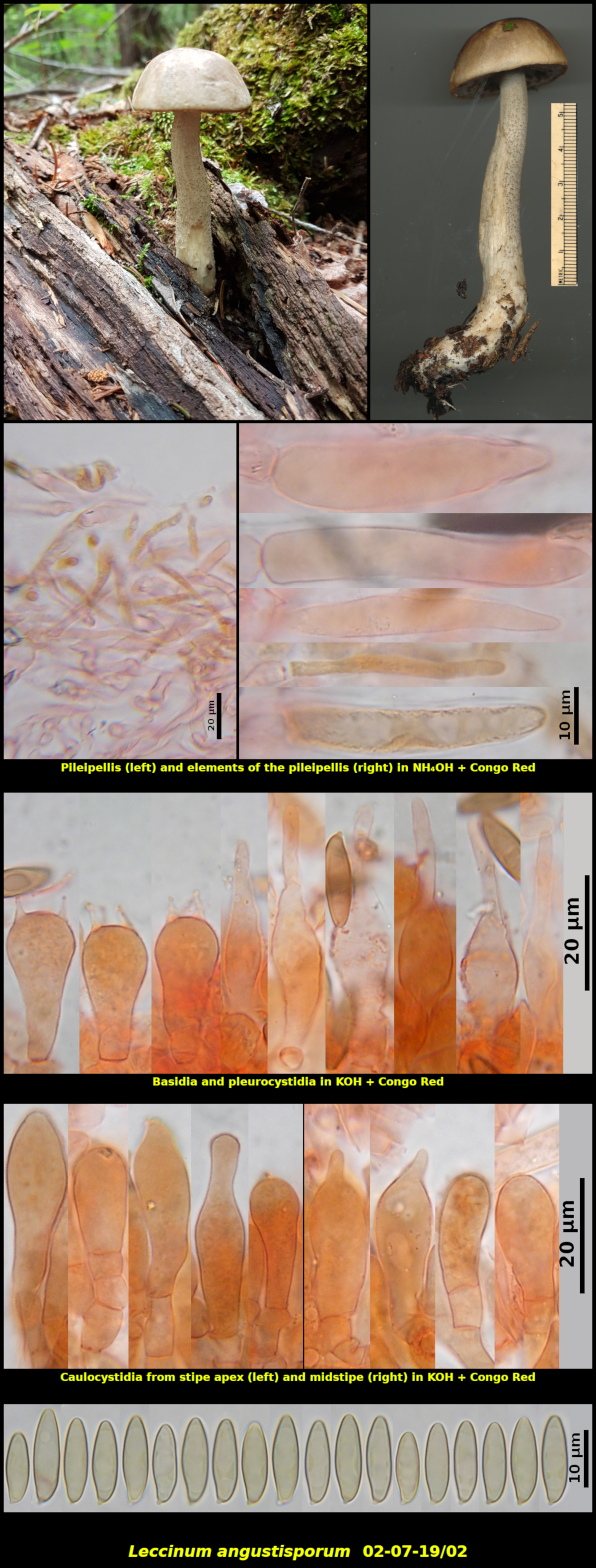Fleshy Fungi of New Brunswick >>
Leccinum angustisporum
Leccinum angustisporum A.H. Sm., Thiers & Watling

Solitary in leaf litter in forest dominated by Acer saccharum, Betula allegheniensis and Fagus gradifolia, Kennedy Lakes Protected Natural Area, New Brunswick (02-07-19/02).
Basidiospores orange brown (HSV25:40:70-80) in spore print, boletoid, smooth, 12.1-16.3 x 4.1-4.7 μm, Q = 2.82-3.49 (average[37]: 14.3 x 4.5 μm, Q = 3.22). Pleurocystidia scattered, not difficult to find, lageniform, rather delicate and neither reviving nor staining well in KOH + Congo Red, 35-48 x 5.7-9.7 μm. Caulocystidia abundant, mostly produced in fascicles and forming macroscopic squamules, hyaline near the apex of the stipe but usually with a brown cytoplasmic pigment below giving the squamules their characteristic colour, clavate to sublageniform, frequently mucronate below the apical region of the stipe, often with 2-3 closely-spaced septa at their base, 19-55 x 7.4-15.4 μm. Pileipellis a compact trichoderm, with terminal elements cylindrical to narrowly clavate, with a thin gelatinous coating on the surface of the uppermost hyphae. Basidia clavate and rather stout, 4-spored. Clamp connections lacking throughout.
Leccinum angustisporum is a rarely-reported associate of birch, known largely from Michigan. It has a rather pale brown pileus and light brown squamules on the stipe. The flesh does not not exhibit the conspicuous colour changes often seen in other species of Leccinum. The most diagnostic feature of this species is the narrow basidiospores. Of the 37 basidiospores measured from a spore print of Collection 02-07-19/02, none had a width greater than 4.7 μm and only one had an aspect ratio (Q-value) less than 2.9.